Several issues can arise when sharing a hotspot while connected to a VPN, preventing you from doing so. This post will examine how to resolve the issue of not sharing a hotspot when the device is connected to a VPN on a Windows PC.
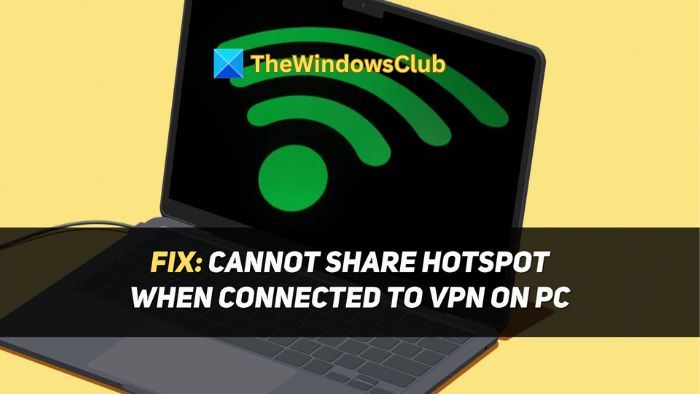
Before troubleshooting, here are some of the common factors that can cause these issues:
- Incorrect Network Settings: Incorrect network settings can end up causing issues with not only the speeds but also the ability to share the data with other devices through hotspots. If you have recently made substantial changes or installed software that can interfere, try resetting the network settings.
- Wi-Fi adapter issues: If the Wi-Fi adapter (the primary adapter required for sharing the hotspot) has underlying issues, you will have issues. It is recommended that troubleshooters be run to identify and fix issues.
- Interference from Custom DNS: Custom DNS (like 1.1.1.1 Cloudflare or Google DNS), primarily set up to ensure privacy and optimal speeds, can interfere with connection sharing.
- Multiple Network Adapters: Several peripheral devices and software can install network adapter drivers on your system. If any such adapters are not in use, they should be disabled.
Fix Cannot share Hotspot when connected to VPN on PC
Several issues prevent you from sharing hotspots when connected to a VPN on a Windows PC; corresponding fixes are discussed in this section:
- Run Network and Internet Troubleshooter
- Reset Network protocols
- Remove custom DNS
- Disable unused Network Adapters
Make sure to use an admin account to execute these suggestions.
1] Run Network And Internet Troubleshooter
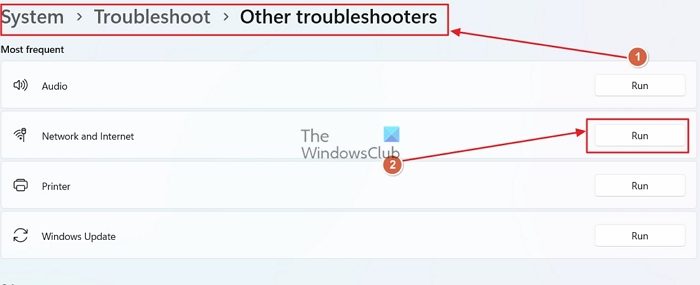
The Network and Internet Troubleshooter will check the adapters and all the settings related to the networks. It identifies and fixes issues on your behalf. Wifi adapter issues can be behind the problem, and this can fix it:
- Open Windows settings by pressing the Windows+I keys on your keyboard.
- Now, go to System > Troubleshoot.
- In the Troubleshoot section, Open Other troubleshooters.
- Find the Network And internet troubleshooter and click the Run button next to it.
2] Reset Network protocols
With software, drivers, and other installations, over time, the network settings for your PC end up getting modified to an extent where they cause issues with hotspots and other elements. You can reset the WINSOCK settings in this case; here’s how:
- Right-click the Windows Start icon and open Terminal (admin) from the context menu.
- Now, in the open, the Command Prompt by pressing Ctrl+Shift+2
- Now, execute the following commands one by one by pasting them and pressing enter after each.
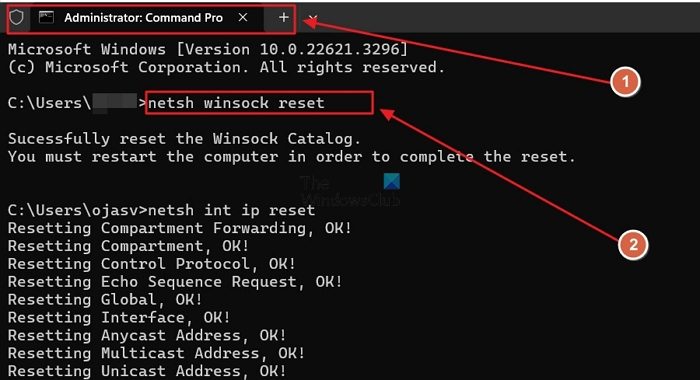
netsh winsock reset
netsh int ip reset
netsh advfirewall reset
ipconfig / flushdns
ipconfig / release
ipconfig / renew
- Restart your PC so the changes take effect.
You can also use our portable freeware FixWin to do the same fil a click!
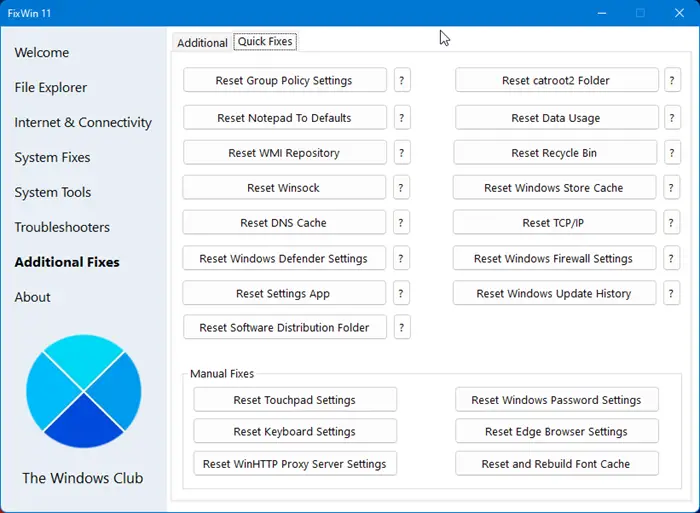
Read: How to use the Netstat command to troubleshoot network issues in Windows
3] Remove custom DNS
Custom DNS is usually set up for privacy, better speeds, or blocking ads. While it does serve the purpose, it can also end up interfering with features such as Wifi hotspots, try removing Custom DNS:
- Open Windows Settings by pressing the Windows+I keys on your keyboard.
- Head over to the Network and internet settings from the left pane in the Windows settings.
- Now, open Advanced network settings.
- You will see all the network adapters listed there. Find your Wifi adapter and expand it.
- Click the Edit button next to More adapter options.
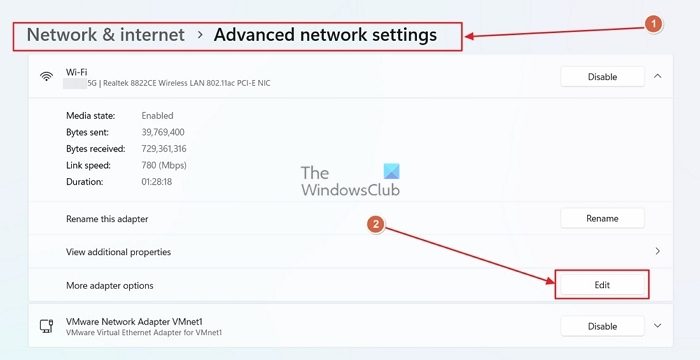
- Find the Internet Protocol Version 4 (TCP/lPv4) option in the open window and double-click it.
- Now, select the options, Obtain an IP address automatically & Obtain DNS Server automatically, and click OK to save.
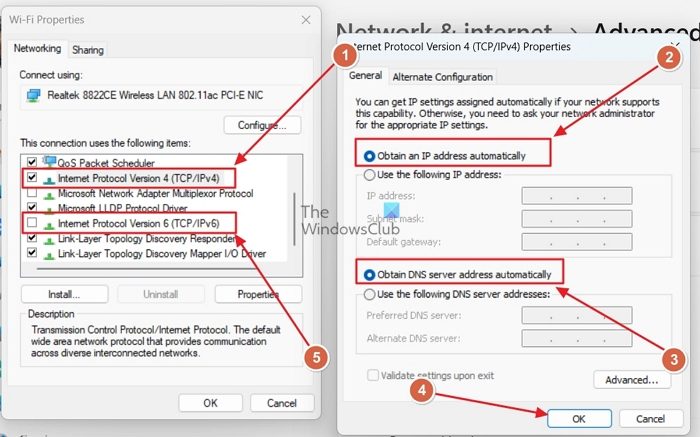
- Do the same for Internet Protocol Version 6 (TCP/lPv6).
Read: Best Free and Public DNS Servers List.
4] Disable unused Network Adapters
Various software and peripheral devices can end up installing network adapters, which can cause issues with Wifi adapters. This is mainly due to IP address conflicts, driver conflicts, and resource allocation issues. When not in use, you should disable these network adapters:
- Open Windows Settings by pressing the Windows+I keys on your keyboard.
- Go to the Network & internet section from the left pane in the Windows settings.
- Open Advanced Network Settings from the options.
- You will now see all the network adapters listed there. Click the Disable button next to the Network adapter you wish to disable.
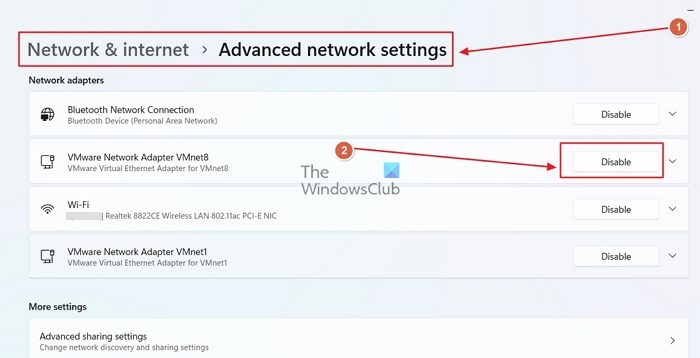
- Once all the Unused network adapters are disabled, restart your PC.
I hope it helps.
Why does VPN not work on some Wi-Fi?
VPNs provide numerous advantages, yet they come with certain limitations. Some governments or regions may restrict outgoing VPN connections to enhance security. Moreover, broadband or mobile network providers focusing on a budget may implement such cost-saving measures.
Does VPN work on all Wi-Fi?
Public Wi-Fi can be risky. Using a VPN that connects to the Internet ensures that all data is secure. Even if someone tries to snoop on your data, they won’t get it.
Leave a Reply